Sure, you’ve seen the image of the Eiffel Tower and the Louvre about a bazillion times. And you may think that seeing those icons is what a trip to Paris is all about. And it can be…but if that’s all you see, you’d be missing the secret life of this dazzling city because its true essence resides in the most delightful Paris neighborhoods.
In other words, if you stick to the tourist routes, you’ll never get an insider’s view of Paris: lovely, narrow streets that aren’t mobbed with tourists; the small, less crowded museums vs. craning your neck at the Louvre; the cafes where you’re the only English-speaker among locals. And of course, hidden treasures of shops, gardens, and restaurants, where–for however long your stay is–you will really scratch the surface of life in Paris.
NextTribe is offering a Paris Insider Tour this coming May. Click here to get all the details.
NextTribe’s trips to France are engineered by our resident expert, Ellen Williams, to reveal some of the most interesting Paris neighborhoods. She keeps our tribe in mind: women 50+ who are curious and more than a little bold. Women who want to explore and discover rather than operate out of a guidebook.
“I’ve been traveling to Paris for more than 40 years,” says Ellen, who has authored multiple books about Paris. “My love for the place and my desire to know more about it endlessly reinforce one another.” And she loves sharing her knowledge, so get set, whether you are joining us on a trip to Paris or are simply at the stage of enjoying some armchair adventures.
Paris Neighborhoods
First, a little grounding in how Paris is laid out. Paris neighborhoods are called arrondissements, and there are 20 of them.
The ones with the lower numbers are at the very center of Paris, where you find such landmarks as Notre-Dame Cathedral and the Louvre. By the time these neighborhoods radiate out to the high teens, like the 18th and 19th, you are near the periphery of the city, heading toward the suburbs. You’ll find fascinating nooks and crannies there, like the Parc des Buttes-Chaumont with its picturesque Roman-style follies, arches, and grottos.
The arrondissements on the Left Bank are filled with bookstores, art galleries, and hundreds of tantalizing boutiques specializing in everything from sweaters to sweets.
Another way to understand how Paris is laid out: There’s a river running through it, the sparkling Seine, and which side of the water you are on matters. Some neighborhoods are on the right bank (Rive Droite) and others are on the left bank (Rive Gauche). Traditionally the Right Bank was home to government and commerce–it’s here that you’ll see some of the most magnificent sites, such as the Grand Palais and Petit Palais, the glittering Champs Elysées, and the Arc de Triomphe. Monumental sites, all.
The Left Bank on the other hand, while it has the ultimate icon, the Eiffel Tower, tends to be considered the more arty, bohemian area. These arrondissements of Paris are filled with bookstores, art galleries, and hundreds of tantalizing boutiques specializing in everything from sweaters to sweets.
Here’s a full list of the Paris arrondissements, along with their “official” names and their highlights:
- 1st arrondissements: Louvre. Just as the name suggests, here you will find the renowned Louvre Museum and the Tuileries Garden. Classic central Paris!
- 2nd arrondissement: Bourse, on the Right Bank of the River Seine. This is the city center, business-wise.
- 3rd arrondissement: Temple. Home to the Picasso Museum.
- 4th arrondissement: Hôtel-de-Ville. This is one of the oldest and best Paris neighborhoods, with part of the historic Île de la Cité, the magical tiny Île Saint Louis, and other wonderful sights. Don’t miss the Marais (more on that below) the amazing Pompidou Center museum and library (Le Centre Pompidou in French), a modern architecture marvel.
- 5th arrondissement: Panthéon. Here’s the Latin Quarter, a vibrant student-filled and ancient Paris neighborhood. Don’t miss the Jardin des Plantes and Roman ruins.
- 6th arrondissement: Luxembourg. This is Saint Germain – as you will soon learn, one of the best neighborhoods in Paris, full of history, shopping, and great food.
- 7th arrondissement: Palais-Bourbon. This is the home of stunning landmarks, including Les Invalides (where Napoleon is buried) and the Eiffel Tower.
- 8th arrondissement: Élysée. Hello, Champs-Élysées, the famed grand avenue, and haute-couture shopping.
- 9th arrondissement: Opéra. This Paris neighborhood is a perfect place to get an eyeful of great architecture and is an up-and-coming destination as young people gentrify homes here.
- 10th arrondissement: Entrepôt. This is home to the charming Canal Saint Martin quarter in Paris, a bustling, multicultural area where you’ll find wonderful restaurants, cafes, and bars.
- 11th arrondissement: Popincourt. The area to the northwest of Place de la Bastille is known for its nightlife, including little bars and other places to spend a perfect Paris evening.
- 12th arrondissement: Reuilly, a Paris neighborhood known for the Bois de Vincennes park and the Opera de la Bastille.
- 13th arrondissement: Gobelins. This part of town, located on the Left Bank of the River Seine, is known as home base for the city’s Asian community.
- 14th arrondissement: Observatoire. Still on the Left Bank of the Seine River, this area contains most of the storied Montparnasse district. It’s home to the Paris catacombs (which you can tour if you’re into creepy-cool outings), the Paris Observatory and plenty of markets.
- 15th arrondissement: Vaugirard. Visit the Grenelle Market here and the Rue du Commerce to pick up on this Paris neighborhood’s vibe.
- 16th arrondissement: Passy. This elegant neighborhood is the place for grand homes, designer resale shopping, and fine dining; learn more below.
- 17th arrondissement: Batignolles-Monceau. A hip, young, bohemian area on the Right Bank of the River Seine, with lots of wine bars around Place de Clichy and street markets.
- 18th arrondissement: Butte-Montmartre. This is where you’ll find Montmartre, the dazzling white basilica of Sacre Coeur.
- 19th arrondissement: Buttes-Chaumont. Towards the far reaches of the city, this wonderful area has the lush Buttes-Chaumont park and the stunning, modern Parc de la Villette, with museums and gardens.
- 20th arrondissement: Ménilmontant. Capping off the arrondissements of Paris is this one, known as the Belleville neighborhood. Once industrial, it’s now full of galleries and street art.
The Paris neighborhoods we think can’t be missed and which you’ll learn about below are:
- Saint Germain
- The Latin Quarter
- The 16th Arrondissement
- The Marais
- Montmartre
Bonus: Canal St. Martin
Read More: Sisterly Love: This Tight Trio Will Always Have Paris
How to Get Around to Paris Neighborhoods
In the spirit of an insider’s view of Paris, do like Parisians do. Walk, yes, by all means. It’s a great way to soak up the city and notice details – and window-shop. Pack comfy shoes: Walking across one of the city’s many bridges (or ponts in French) across the Seine can be a highlight of your trip. For many, that means traversing the extravagant Pont Alexandre III, adorned with winged horses and cherubs. Selfie time, for sure.
Peering out a bus window and seeing those gorgeous zinc-roofed, limestone buildings float by is a magical experience in and of itself.
But you can only get so far on foot, so also take the metro (subway) or buses. Peering out a bus window and seeing those gorgeous zinc-roofed, limestone buildings float by is a magical experience in and of itself.
You can use the same kind of ticket on the metro and on the buses. You can get what is known as a Navigo Easy card, a reusable contactless pass on which you can load fares. (Buy them in metro stations and at select shops.) When you enter the metro or board a bus, you just wave your card in front of the purple circle. You’ll hear a ding and see a green light to pass through the turnstile (which will also show you how many tickets you have left). You can also check your fare balance at Navigo ticket machines or at ticket counters in stations.
The Neighborhoods We Love
Now, let’s look at our favorite Paris neighborhoods…ones where you can get an authentic perspective of the city’s history and what makes it tick today. These are the arrondissements we absolutely adore–and they are the ones that have people returning, year after year, as they live like Parisiennes during their travels. Visit them, and you’ll cover from the center of the city to its outer reaches.
We went to the little museums, stunning parks, and ate in some of the most divine restaurants in the city–the ones locals adore.
Explains NextTribe CEO and founder, Jeannie Ralston: “We set up the trip for people who had been to Paris before, because we wanted to offer an inside look at the City of Light. Ellen introduced us to a street market where almost all of us found clothes, purses, hats, jewelry, and linens that we would never have discovered otherwise. We went to the little museums, stunning parks, and ate in some of the most divine restaurants in the city–the ones locals adore. I love sharing the city with adventurous women from all over.”
Now that you know a bit about what Paris neighborhoods are called, how they are laid out, and how to navigate them via public transportation, let’s take a closer look at our 5 most interesting areas, plus a bonus entry.
Insider Paris Neighborhood #1: Saint Germain
We’re trying not to play favorites, but Saint Germain (or, if you prefer its full name, Saint-Germain-des-Prés) is a not-to-be-missed neighborhood in Paris. On our trips to Paris, this is our home base and you’ll see, it’s easy for us to rave about this area.
We highly recommend Saint Germain as the best arrondissement to stay in Paris. For starters, it’s filled with history: This is where some of the great thinkers, artists, and writers of the past century or two lived and worked (more on that in a minute). This section of the sixth arrondissement on the Left Bank effortlessly combines style and substance, and whether you want to walk its chic, charming streets, or park yourself at one of its celebrated cafes, like Deux Magots or Café de Flore, and people-watch, you’ll have a brilliant time.
A Little History Lesson
It meant so much that Ellen led us to the blue door to the apartment where Julia Child lived in Paris.
Let’s look back for a moment at why this Paris arrondissement is so noteworthy: Among its past residents were the cultural elite: Writers Colette, Jean-Paul Sartre, Simone de Beauvoir, and artists like Pablo Picasso held court there. Americans also: Author Edith Wharton (53 Rue de Varenne was her long-time home), who escaped the confines of New York’s Gilded Age high society for the freedom and excitement of Paris. Julia Child, one of the world’s first celebrity chefs, discovered the career path that would lead her to household-name status, living on Rue de l’Université (number 81, to be exact) and practicing the culinary skills she was learning at the Cordon Bleu. Says NextTriber Flora Marvin, “I have a shopping bug inherited from my grandmother, the one who loved to prepare meals from recipes in the well-worn Julia Child cookbook. It meant so much that Ellen led us to the blue door to the apartment where Julia lived in Paris.”
What to See in Saint Germain
Visiting Rue du Bac can be a wonderful immersion in Left Bank life. The street, once a cattle-driving path, is now lined with grand townhouses, from when the wealthy moved into the neighborhood. Not only is the architecture elegant and distinctively Parisian, but both sides of the street are lined in gourmet shops (pop into the cheese shop Androuet, just off Rue du Bac; it opened in 1909) and fabulous boutiques–a must-visit if you want to bring a bit of French fashion home with you.
Also, it’s worth noting that La Tour Eiffel is not too far away, in the adjacent 7th arrondissement (which can be the best Paris neighborhood to stay in near the Eiffel Tower, if doing so is on your bucket list). It can be a lovely stroll over there from Saint Germain or a quick trip on public transportation. May we recommend a sunset stroll?
Shopping in Saint Germain
Deyrolle, a shop-sized natural history museum founded in 1831, brims with fabulous collections of seashells, fossils, insects, and exotic taxidermy.
The jewel in the crown of Rue du Bac is the fabulous (and historic) Le Bon Marché department store and its food hall— the separate buildings are located on either side of the Rue du Bac between Rue Babylone and Rue de Sèvres. About that food hall: Its chic shopping totes make good souvenirs, and who wouldn’t appreciate a jar of jam by Christine Ferber–deemed the finest producer of artisanal confiture, with Alsatian strawberry, raspberry-elderflower, and blackcurrant-violet among the varieties.
Also while you’re out anywhere in the city, don’t miss Monoprix (52, Rue de Rennes), which Ellen likes to call Target on steroids. Beauty mavens will want to check out Citypharma (26 Rue du Four), a French beauty and skin-care mecca.
For an only-in-Paris treasure, visit Deyrolle, at 46 Rue du Bac. The shop-sized natural history museum founded here in 1831 brims with fabulous collections of seashells, fossils, insects, and exotic taxidermy (fashioned, we have been assured, from beasts that died in captivity of natural causes). Woody Allen set a Surrealist party here in Midnight in Paris. Beautiful gardening tools are among the unusual gifts and souvenirs you’ll find here.
Museums in Saint Germain
Two small, not-to-be-missed jewels of museums in this cultural center are the Musée Maillol (#61, Rue de Grenelle) and the Musée Rodin (#77, Rue de Varenne), where you can stroll the beautiful garden decorated with some of the sculptor’s finest works.
Where to Eat in Saint Germain
For dinner, don’t miss the soufflés at Le Recamier (4 Rue Juliette)–cheese, mushroom, and salmon are just a few of the possibilities. Eric Kayser at 18 Rue du Bac has a terrific selection of sandwiches, salads, and pastries–ideal for lunch. We also love Le Bac à Glaces, #109, Rue du Bac, for artisanal ice cream in flavors like honey and pine nuts and their pink grapefruit sorbet.
Insider Paris Neighborhood #2: Latin Quarter
If Saint-Germain gives you a taste (literally and figuratively) of chic Parisian life, the Latin Quarter will give you an earthy, energetic experience where students love to gather. Here in the 5th arrondissement, again on the Left Bank, you will see the past and present. There’s everything from traces of Roman life to square that serves home base for “Emily in Paris.”
A Little History Lesson
The Latin Quarter is so named because back in the Medieval Ages, many of the schools in this district taught their students Latin. It’s one of the oldest areas of the city. You can visit the Arenes de Lutece (49 Rue Monge), an amphitheater that once held 15,000 and dates to the 1st century AD. The area is still an educational hub. You’ll find the world-renowned Sorbonne here, and plenty of bookstores.
What to See in the Latin Quarter
There’s so much variety and history in the Latin Quarter; you can sample so much there by hitting various sites, or drill down on what catches your attention. Definitely drink in some of the ancient sites, and tour the Rue Mouffetard, the oldest market street in Paris. We Americans don’t get exposed to 2,000-year-old cityscapes back home!
Definitely tour the Rue Mouffetard, the oldest market street in Paris.
“I tend to wander off on my own,” says Rosie Salcido, who visited Paris with us, “and I came across some beautiful Paris streets that seemed to come out of a movie set with cobblestones, flowers in the windows, doors that have seen centuries of history walk by, and shops that offer everything from pastries to chocolates to handmade shoes (with a cobbler tucked in a corner).”
Stroll through the Jardin des Plantes, a centuries-old botanical garden in full bloom.
Where to Shop in the Latin Quarter
Many visitors love popping into Shakespeare & Co., the venerable English-language bookstore at 37 Rue de la Bucherie. Love photography and art books? Visit La Nouvelle Chambre Claire (3 Rue d’Arras), a bookstore and photography gallery; its wares include limited edition releases and books signed by photographers.
Museums in the Latin Quarter
A stunning modern building designed by celebrated architect Jean Nouvel, the Arab World Institute (Rue des Fossés Saint Bernard) is worth a visit. You may find intriguing exhibits (one of our groups of recent visitors got to see sumptuous 18th- and 19th-century silk-brocade robes from the Spice Route) and there’s a roof deck with a stunning view of Notre-Dame.
Where to Eat in the Latin Quarter
For a memorable meal, La Truffière (4 Rue Blainville) earns raves for its delish food and ambience–stone vaults, wood beams, all very old and magical–and Les Filles Restaurant Galerie (138 Rue Mouffetard) a delightful Italian eatery that spills out onto the cobbled market street.
Insider Paris Neighborhood #3: The 16th Arrondissement
On the Right Bank, don’t miss the posh 16th arrondissement. If you’ve been to NYC, this neighborhood in Paris may remind you of the Upper Eastside: well-manicured and very elegant. If you want a really luxe trip, this arrondissement can be the best to stay in when visiting Paris. Regardless of where you take a hotel, though, allow us to share one of the reasons we love spending time in this area: the best street market we’ve come across and designer resale shops loaded with cast-offs from the stylish Parisiennes who live there.
A Little History Lesson
Located towards the outer limits of the city, this neighborhood in Paris was established in 1859 and became a favorite of high society. Legend has it that it was destined to be the 13th arrondissement, but the wealthy and powerful didn’t like the unlucky associations of that number and used their influence to nab sixteen instead.
What to See in the 16th Arrondissement
Take in the glorious architecture and well-kept streets here on the Right Bank. And, by all means, marvel at the Arc de Triomphe, as well as the views of the Eiffel Tower you may glimpse as you stroll. There are also grand museums and luxe hotels dotting this Parisian neighborhood.
Shopping in the 16th Arrondissement
On recent NextTribe visits, shoppers loaded up on linen dresses, leather belts and bags, and hats.
Paris expert Ellen Williams, adores this area for the preloved fashion you can score at its dépôts-ventes (“drop-sell”). One of her favorites is Dépôte Vente Luxe (14 Rue de la Tour) which focuses on of-the-moment fashion, not vintage, from right now or a couple of seasons ago. On one recent trip, she spotted a Fendi Peekaboo bag, a Saint Laurent Sac de Jour bag, and a Balmain biker leather jacket, among other treasures. Loretta & Jasmin (6 Rue François Millet) is another favorite shopping stop.
Another don’t-miss destination: Marché President Wilson, one of the best Paris street markets, with clothes and accessories vendors in addition to gorgeous displays of food and flowers. On recent NextTribe visits, shoppers loaded up on linen dresses, leather belts and bags, and hats. Open on Wednesday and Saturday mornings.
Museums in the 16th Arrondissement
Are you a fan of Claude Monet’s gorgeous Impressionist works? Then visit the Musée Marmottan Monet (2 Rue Louis Boilly) in the 16th arrondissement. It houses a dazzling collection of canvases by Monet, as well as exhibitions of other artists’ work.
Where to Eat in the 16th Arrondissement
Conti Restaurant (72 Rue Lauriston) is one of the oldest Italian eateries in Paris, beloved for its pastas and carpaccio. Maison Noura (21 Avenue Marceau) is a sleek spot to sample Lebanese dishes.
Insider Paris Neighborhood #4: The Marais
Next on our list of most interesting Paris neighborhoods is the lively and historic Marais district, which spans parts of the 3rd and the 4th arrondissement. What’s fascinating about this area is how the centuries collide. One minute, you are admiring a venerable building where the ruling class gathered ages ago; the next, you are having a matcha latte at a super-hip café.
A Little History Lesson
You can stroll through the vaulted brick arcades, knowing that everyone from Cardinal Richelieu to Victor Hugo once lived here.
This is where the aristocracy was headquartered before the Revolution, and it has some grand squares to admire. You may also hear it referred to as the Jewish district of the city. Indeed, it was the heartbeat of Jewish life in Paris over the eras, and you will still find Israeli street food here.
What to See in the Marais
A favorite insider spot to hang out and rest a bit is the Place des Vosges, a superb square of green space framed by historic mansard-roofed buildings dating to the 17th century. You can stroll through the vaulted brick arcades, knowing that everyone from Cardinal Richelieu to Victor Hugo once lived here. Sit on a bench, and soak in the history and the always energizing sound of kids playing.
Where to Shop in the Marais
If you’re in the Marais, be sure to explore what’s known as the Village St. Paul, a maze of courtyards off of the Rue St. Paul, dating back hundreds of years, and packed with antique dealers, home décor shops, and galleries. Or stop into Merci, the popular French “concept store,” at 111 Boulevard Beaumarchais; it has great fashion and design finds in a three-story, glass-topped space.
Where to Eat in the Marais
Need some sustenance? Refuel at the nearby Tartine (24 Rue de Rivoli), an art deco wine bar where you can enjoy anything from coffee and a croissant to delicious charcuterie and cheese plates with wine.
Another find: Les Philosophes (28 Rue Vieille du Temple) where you can sample classics like Boeuf Bourguignon. Says NextTribe member Liz Buckley, “In Paris, I was living my dream! Ellen led us to magnificent sites I had never seen or imagined.”
Museums in the Marais
If you have free time in the Marais, visit the Musée Carnavalet (23 Rue de Sévigné), the compelling Paris history museum. Interested in learning more about the Jewish roots of this neighborhood in Paris? Visit the mahJ, which is short for the Musee d’Arte et d’Histoire du Judaïsme (71 Rue du Temple).
Insider Paris Neighborhood #5: Montmartre
On a hill overlooking the city in the 18th arrondissement, this bohemian neighborhood may be familiar to you from postcards of the distinctive white domed Basilica of Sacre Coeur to the paintings of Toulouse-Lautrec depicting the quartier’s robust nightlife at the turn of the century.
A Little History Lesson
This neighborhood in Paris is renowned for its artistic heritage and its nightlife. During the Belle Epoque and beyond, a host of creative geniuses–including Picasso, Toulouse-Lautrec, Degas, and Renoir–lived and/or worked there. The Nouvelles-Athènes quarter south of Montmartre, which was developed during the Romantic period of the 19th century, includes the happening Rue des Martyrs, a street so compelling, a former New York Times Paris bureau chief wrote an entire book about it.
What to See in Montmartre
Rue de Martyrs has maintained the charming atmosphere of a French village Main Street.
Paris expert Ellen Williams loves to lead our groups on tours of Rue des Martyrs. Named for the martyred St Denis, the first bishop of Paris, who was allegedly beheaded at the bottom of the street near the columned church of Notre-Dame-de-Lorette, this Rue commerçante slopes up toward Montmartre. It has maintained the charming atmosphere of a French village Main Street. There are gourmet markets, top-quality pastry shops and bread bakeries, trendy cocktail bars, florists, fashions boutiques, and lively cafés.
It was also home to Impressionist painter Mary Cassatt (1844-1926). An unmarried American living in France, Cassatt became renowned in the heady creative atmosphere of Paris. Enjoying rare success during her lifetime in a male-dominated field, she paved the way for future female artists.
Entertainer Josephine Baker (1906-1975) owned her own club in Montmarte. Born in the slums of segregated St. Louis, Missouri, a teenage Baker arrived in Jazz Age Paris, skyrocketing to a fame, and experiencing a dignity in France she had never known in the U.S.
Where to Shop in Montmartre
Oh My Cream (4 Rue des Abbesses) stocks hard-to-find clean beauty brands. If you’re in the area on Sunday, check out the Brocante des Abbesses at Places des Abbesses. You might come home with some vintage finds or just enjoy the treasure-hunting far from home.
Museums in Montmartre
Two amazing little museums to visit are the Musée Gustave Moreau (14 Rue Catherine de la Rochefoucauld), the house-museum of the celebrated Symbolist painter, and the Musée de la Vie Romantique (16 Rue Chaptal), a charming literary museum at the foot of the hill where you can learn about the life of George Sand and other authors. Plus it’s a great place to have a coffee break in the museum’s garden café.
Where to Eat in Montmartre
Pop into Breizh Café Abbesses (93 Rue des Martyrs) for a wonderful authentic crepe–or two. Fabulous!
Read More: 14 Love Stories: Celebrating Fun and Friendship in France
Bonus Insider Paris Neighborhood: Canal St. Martin
When in Paris, we highly recommend spending a bit of time in the 10th arrondissement near the Canal St. Martin. There is something unforgettable about walking along this canal that runs through the neighborhood. Film fans will remember Amélie skipping stones here.
Grab lunch or dinner at our favorite restaurant, the inventive, award-winning Les Enfants Perdues (9, Rue des Récollets), or sidle up to a café or bar and watch the world go by. Cheers! You’re in Paris, off the beaten path, and having a wonderful time.
Ready to join the fun with NextTribe in Paris? Or somewhere else in the world? Learn more about upcoming trips here.

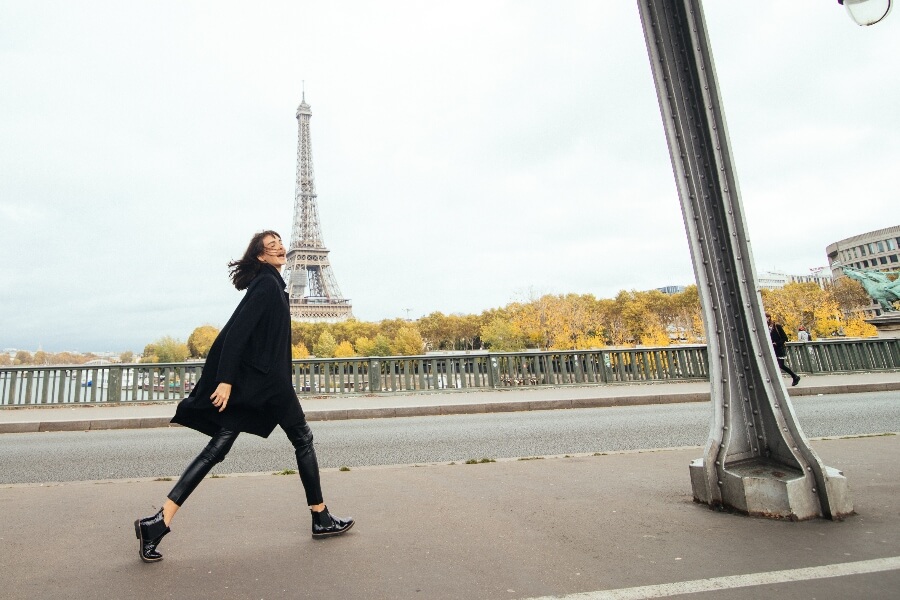
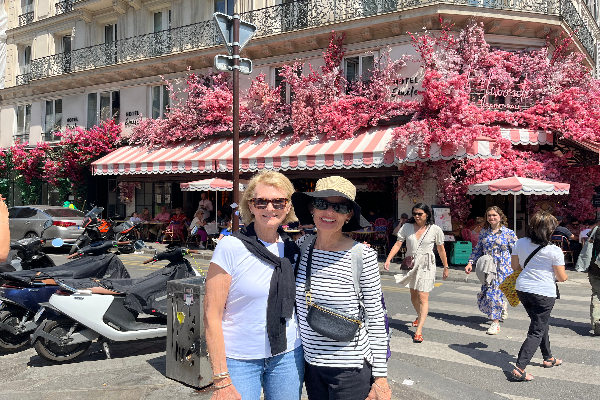


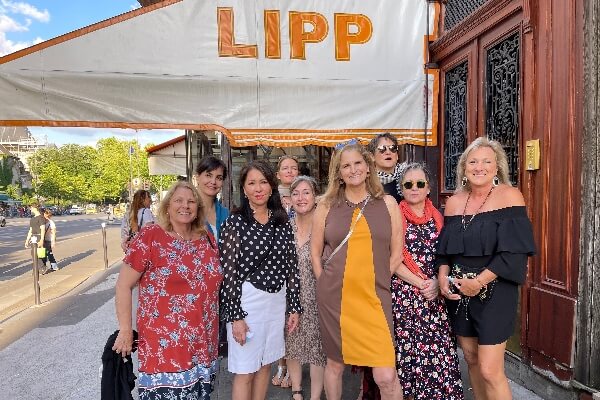
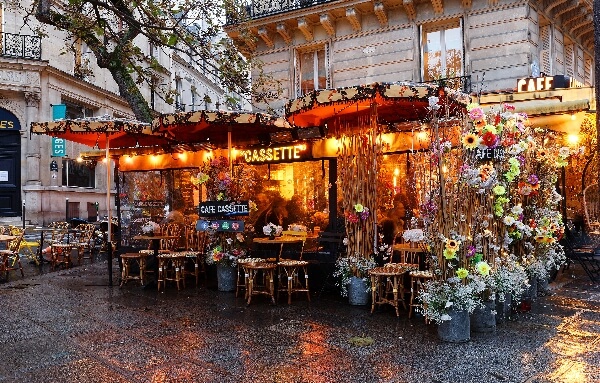

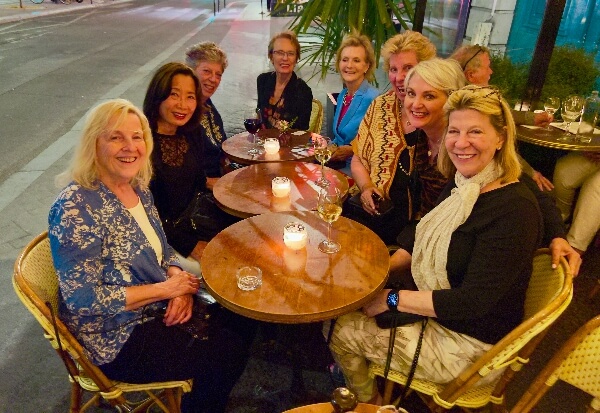
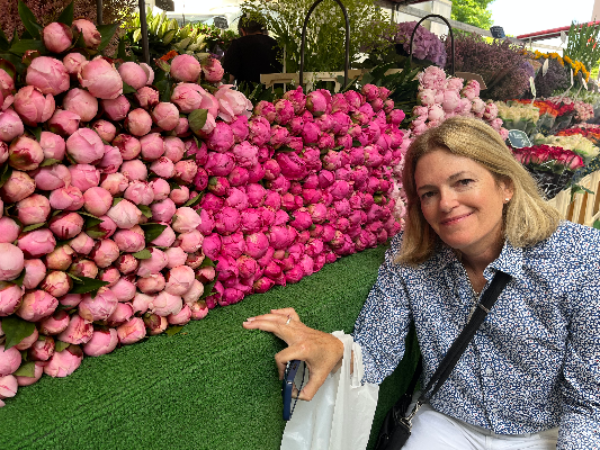

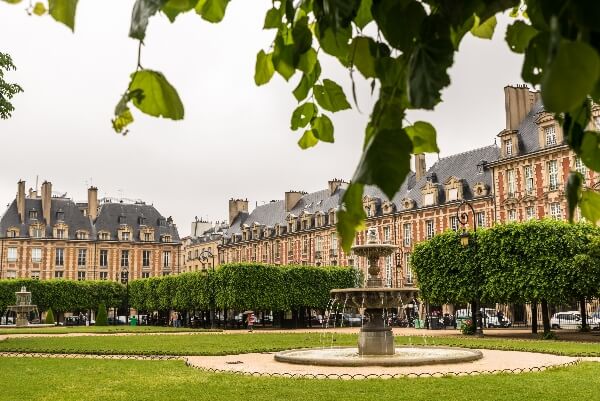
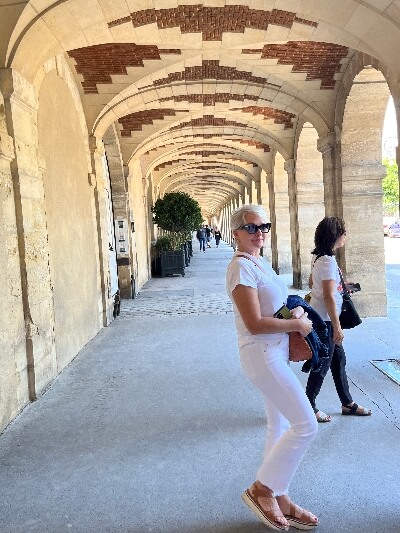
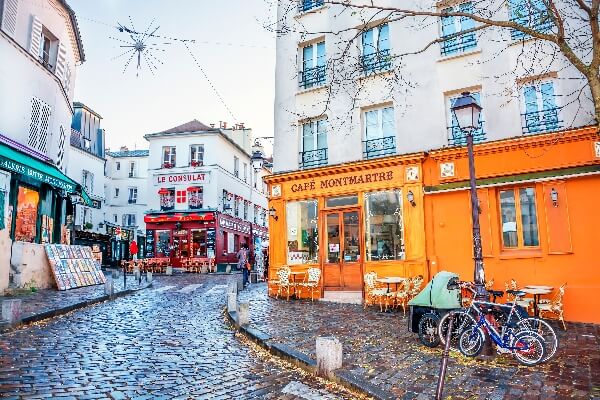

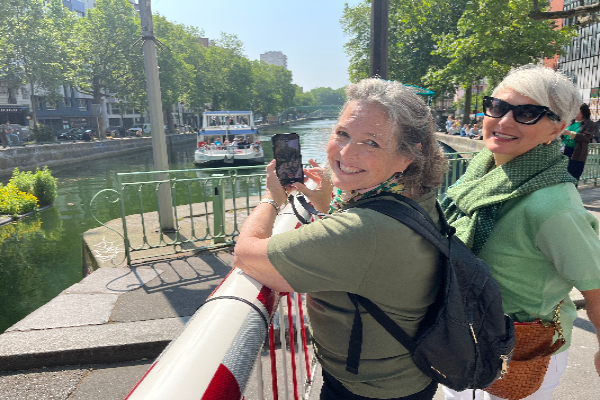



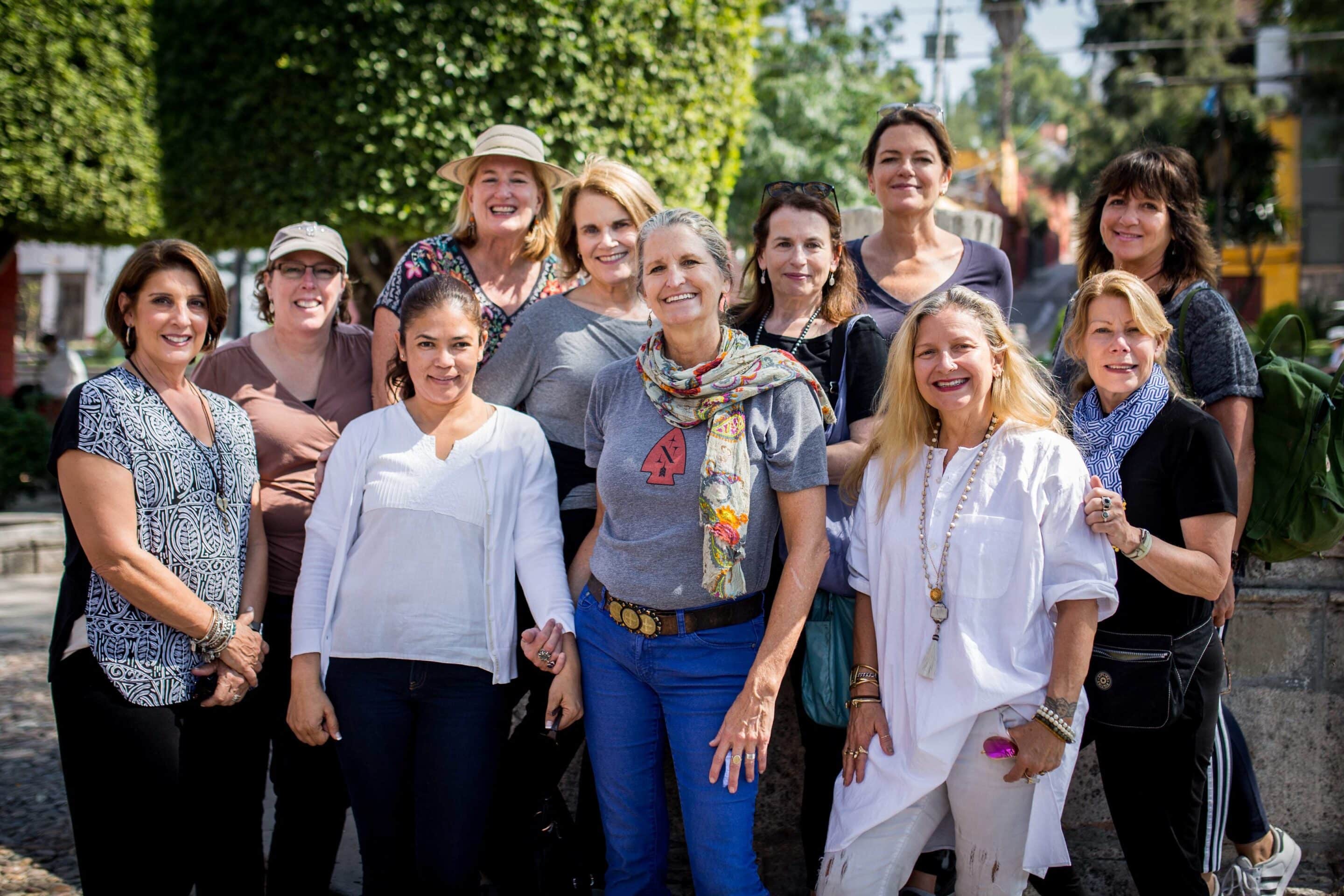


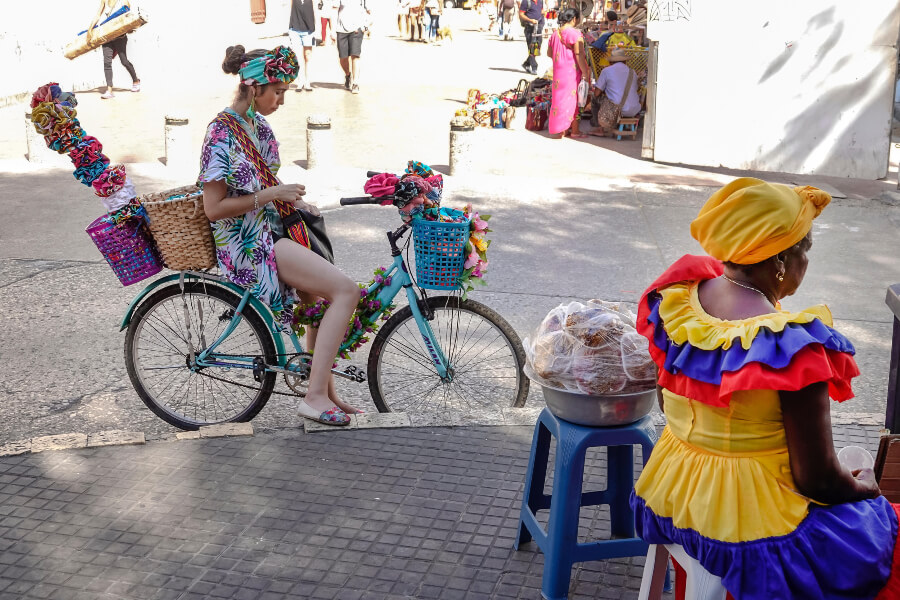








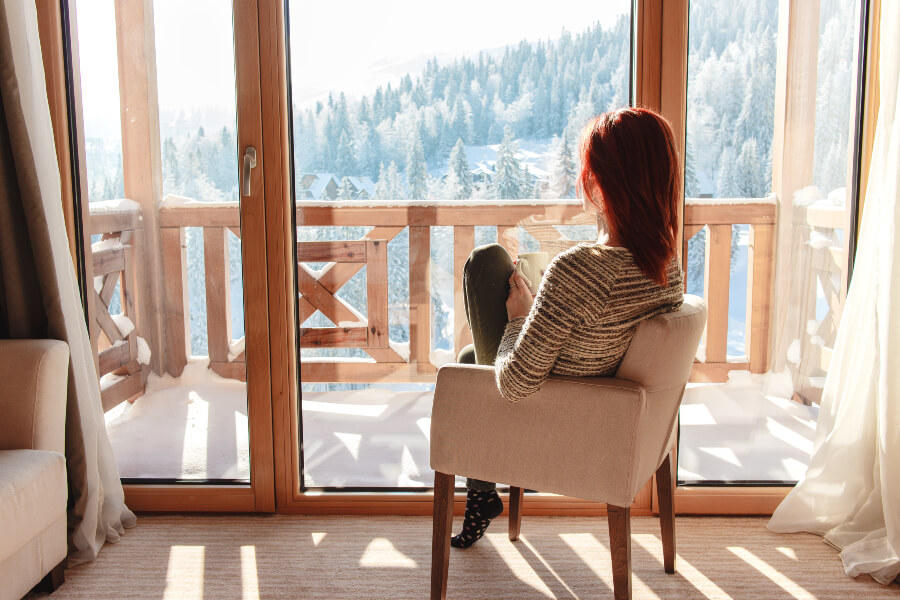
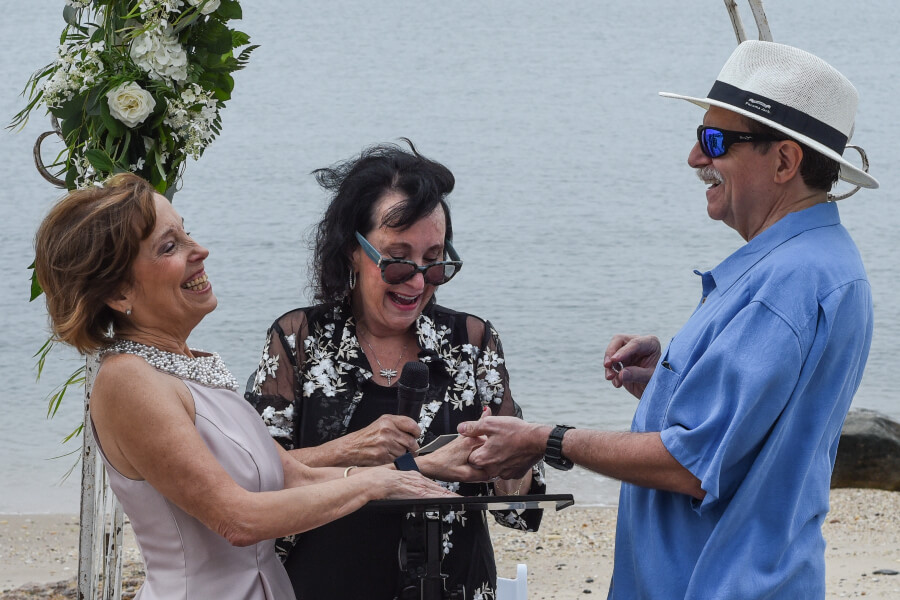


0 Comments